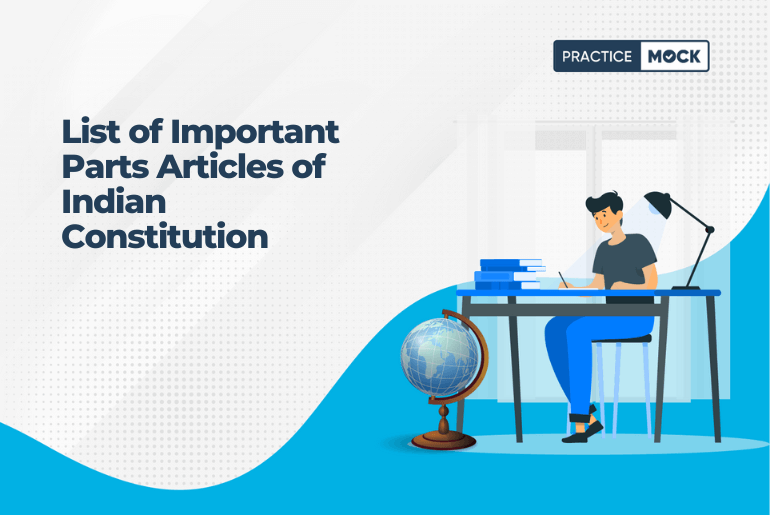Important Parts Articles of Indian Constitution: The Indian Constitution is the fundamental document that governs the world’s largest democracy. It is a comprehensive text, and it is divided into numerous parts, articles, and schedules, each addressing specific aspects of governance and rights. Let’s delve into some of the essential parts and articles of the Indian Constitution.
Part I: The Union and Its Territory (Articles 1-4)
This part defines India as a Union of States, specifies the names and territories of states and union territories, and outlines the power of Parliament to alter state boundaries.
Part II: Citizenship (Articles 5-11)
Part II defines who qualifies as a citizen of India, the provisions for acquiring and terminating citizenship, and the rights of citizens.
Part III: Fundamental Rights (Articles 12-35)
Part III of the Indian Constitution is one of the most critical sections. It includes fundamental rights such as the right to equality, right to freedom, right against exploitation, right to freedom of religion, cultural and educational rights, and the right to constitutional remedies.
Part IV: Directive Principles of State Policy (Articles 36-51)
This part of the Constitution contains the directive principles, which guide the state in policy-making, emphasizing social and economic justice.
Part V: The Union (Articles 52-151)
Part V discusses the Union executive, including the President, Vice President, Prime Minister, Council of Ministers, and Attorney General.
Part VI: The States (Articles 152-237)
Part VI pertains to the state governments and includes details about the Governor, Chief Minister, and the state Council of Ministers.
Part IX: The Panchayats (Articles 243-243O)
Part IX deals with Panchayats, which are essential in the decentralization of power in India’s federal structure.
Part IXA: The Municipalities (Articles 243P-243ZG)
This part focuses on municipalities and their role in local governance.
Part X: The Scheduled and Tribal Areas (Articles 244-244A)
Part X contains provisions related to the administration of scheduled and tribal areas.
Part XII: Finance, Property, Contracts, and Suits (Articles 264-300A)
This part discusses various financial matters, including distribution of revenues between the Union and states.
Part XIV: Services Under the Union and States (Articles 308-323)
Part XIV addresses the services under the Union and states, with a particular focus on All India Services.
Conclusion
The Indian Constitution is a living document that continues to evolve with amendments and interpretations. These parts and articles collectively form the backbone of Indian governance, protecting fundamental rights, directing government policy, and outlining the structure of government. Understanding these provisions is crucial for every Indian citizen and anyone interested in the governance of this diverse and vibrant nation.
- Sign Up on Practicemock for Updated Current Affairs, Free Topic Tests and Free Mini Mocks
- Sign Up Here to Download Free Study Material
Free Mock Tests for the Upcoming Exams
- RRB PO 2024 Free Mock Test
- RRB Clerk 2024 Free Mock Test
- SSC MTS Free Mock Test
- SSC CHSL Free Mock Test
- SSC CGL Free Mock Test
- GATE Mechanical Free Mock Test
- GATE Civil Free Mock Test
- NABARD Gr. A Free Mock Test
- SBI Clerk Mains Free Mock Test
- SSC CPO Free Mock Test
- AFCAT Free Mock Test
- CAT Free Mock Test
- NIACL Assistant Free Mock Test
- UIIC AO Free Mock Test
- UIIC Assistant Free Mock Test
- GIC Assistant Manager Free Mock Test
- NICL AO Free Mock Test
- Free SSC Live Test
- UPSC CSAT Free Mock Test
- CDS-I Free Mock Test
- RRB ALP Free Mock Test


